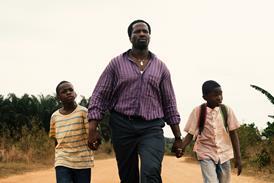One area where independent producers can carve a niche, and occasionally even trump the studios, is computer-generated animation.
In the present age of tent-pole studio films and mammoth P&A spends, it can be difficult for independent producers, especially those outside English-speaking markets, to compete in the field of mainstream genre movies. But one area where they can carve a niche, and occasionally even trump the studios, is computer-generated animation.
At a Hong Kong FilMart seminar moderated by Screen International last month, the indie producers of hit animations such as Valiant, Space Chimps and Thai production Khan Kluay, discussed how they managed to turn a profit despite the rise of $150m productions from the likes of Pixar, DreamWorks and Fox’s Blue Sky Studios.
Valiant and Space Chimps, produced by Vanguard Animation, were both made for around $36m and have grossed $62m and $65m worldwide respectively. Kantana Animation’s $5m Khan Kluay grossed $3m on home turf in 2006, making it the biggest animation ever in Thailand, and was picked up for North American distribution by The Weinstein Company (TWC). Both Space Chimps and Khan Kluay have spawned sequels and Kantana is also working on an environment-themed animated feature Echo Planet.
The panellists agreed that sheer demand is a major factor in the success of these films, along with the fact that costs have come down dramatically in the past ten years. “Kids want to see these films all year round – there’s room physically to get into the marketplace,” said Jonathan Kier, senior vice president, international affairs and distribution for TWC, which recently picked up Hong Kong animated feature Little Gobie.
Meanwhile, Hiroyuki Seshita, who worked on Sony’s Final Fantasy and is currently executive director of Japan’s Casio Entertainment, described how the film was made in Hawaii for $160m in 1997, but would now only cost around $30-40m. Both Valiant and Space Chimps were made for $36m, through an independent funding model, based on pre-sales, a US distribution deal and soft money from both the UK and Canada. “The US deal was the catalyst for funding. We had a 24-month production cycle and a completion bond, so we had to keep to deadlines,” said Vanguard co-producer Curtis Augspurger.
Khan Kluay and its sequel were made even more cheaply – for around $5m each – but panellists observed that you don’t have to match studio quality to achieve a local hit. “We can’t compete with the technology of the big US studios, but by using our own stories and our home-grown style, we have something different and charming to bring to the audience,” said Kantana Animation managing director Auchara Kijkanjanas.
Animation also lends itself to dubbing, and the use of local voice talent, which can often result in friction-free travel to other territories. Valiant grossed more than Robots in France, helped by the appeal of local voice talent, a factor that also enabled TWC’s Hoodwinked to rack up more than one million admissions in South Korea.
The next step in CG animation is the widespread use of 3D, which the speakers agreed is within the reach of independents. “It’s not expensive to add a 3D element – the kids love it and ticket prices are higher,” said TWC’s Kier. However all spoke of the need to plan for this from the very beginning. “You need to write it differently so the artists can bring that experience in a different way. You need to know from the beginning that 3D is what you’re making,” said Vanguard’s Augspurger.
The panellists also spoke of the need to keep overheads to a minimum and have a solid financing plan in place. In the case of Vanguard, this meant buying technology off the shelf, using temporary staff and setting up temporary studios in warehouses in the UK and Canada.
The recent closure of Hong Kong’s Imagi Studios highlights the dangers in setting up more permanent facilities in high-cost locations, unless you have a continuous pipeline of product. Following the box office failure of Imagi’s Astro Boy, the company has shut down its Hong Kong operations, although it said it will continue to develop projects and outsource the animation work to mainland China.
One of the markets where Astro Boy disappointed is Japan – a territory with a long tradition of 2D animation, which has often snubbed photo-realistic CG films. However, Casio’s Seshita pointed to the success of Avatar in the territory and said he thought that 3D animation would eventually find its place alongside 2D. “Manga is very strong in Japan, and will always be available, but the audience is also looking for new experiences and wants something special,” Seshita said.

















No comments yet